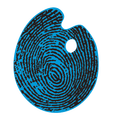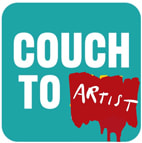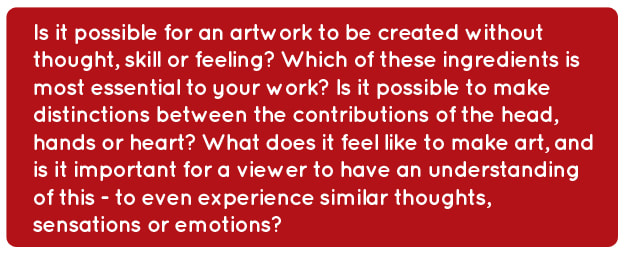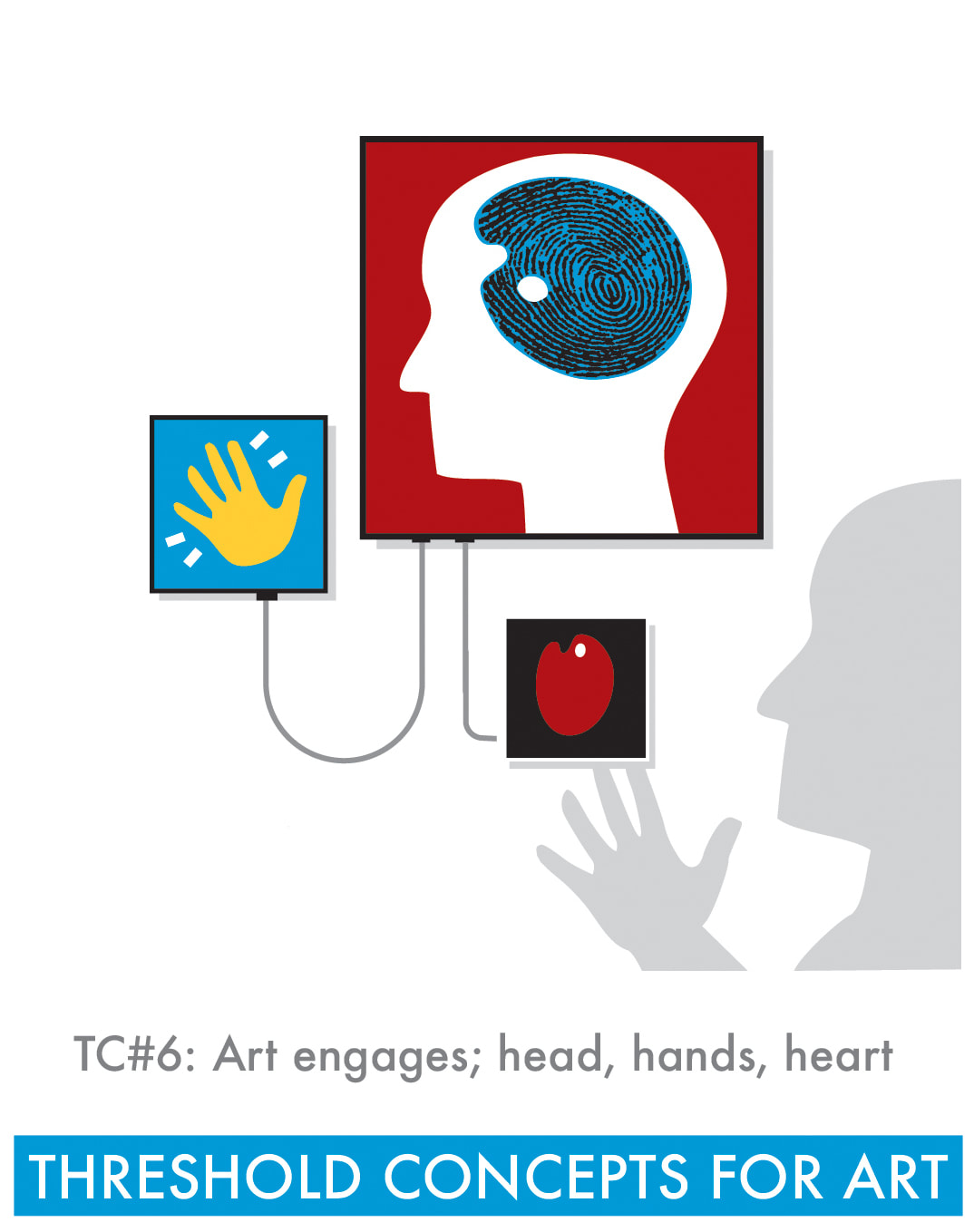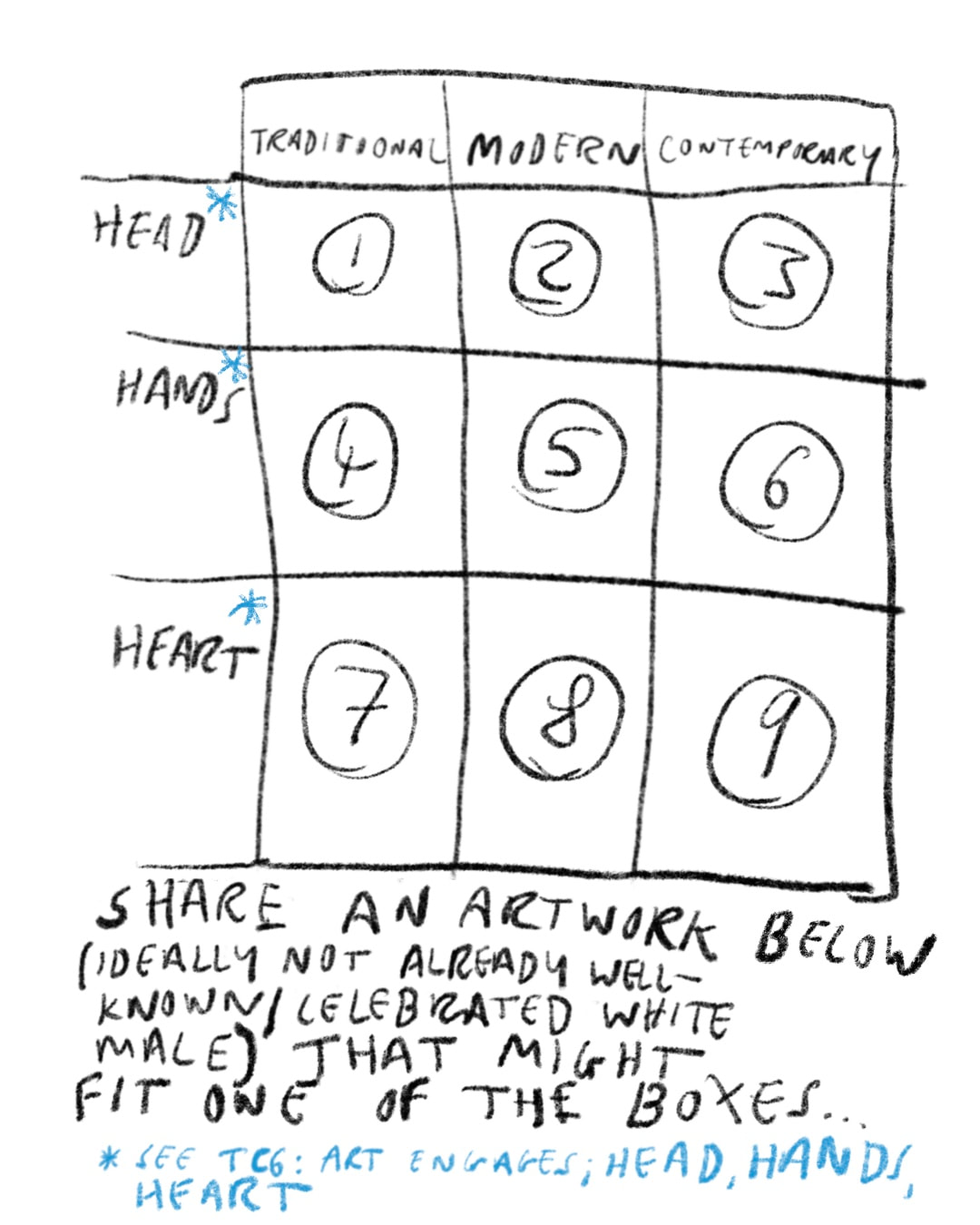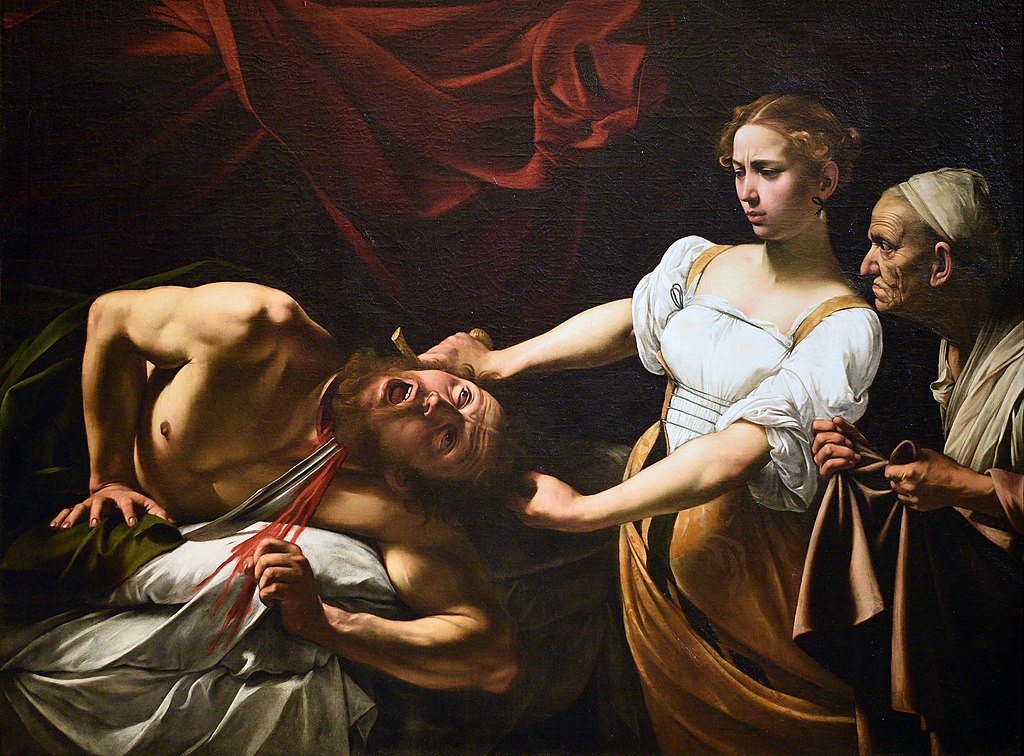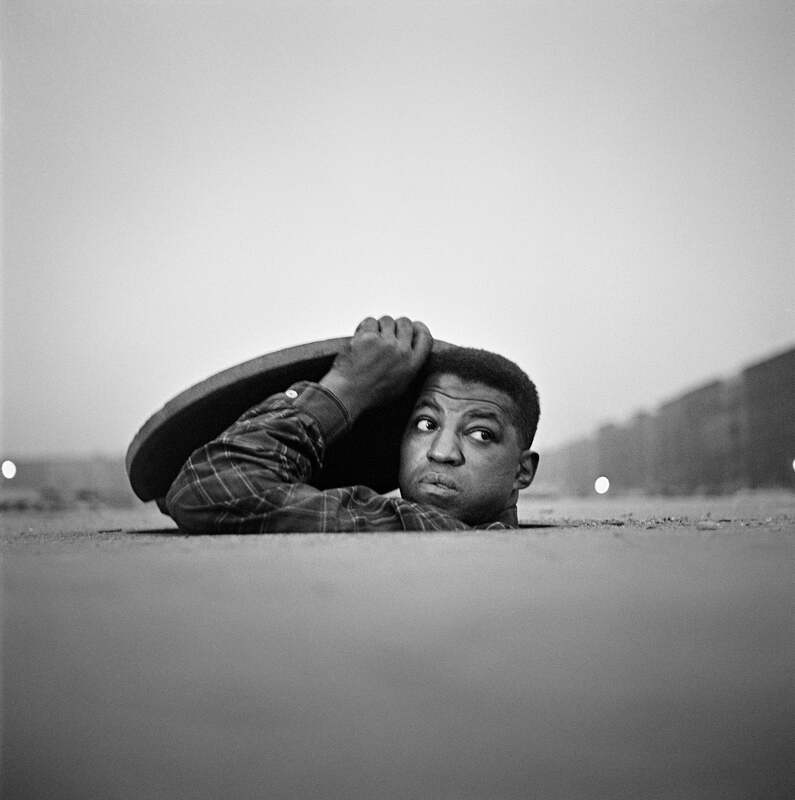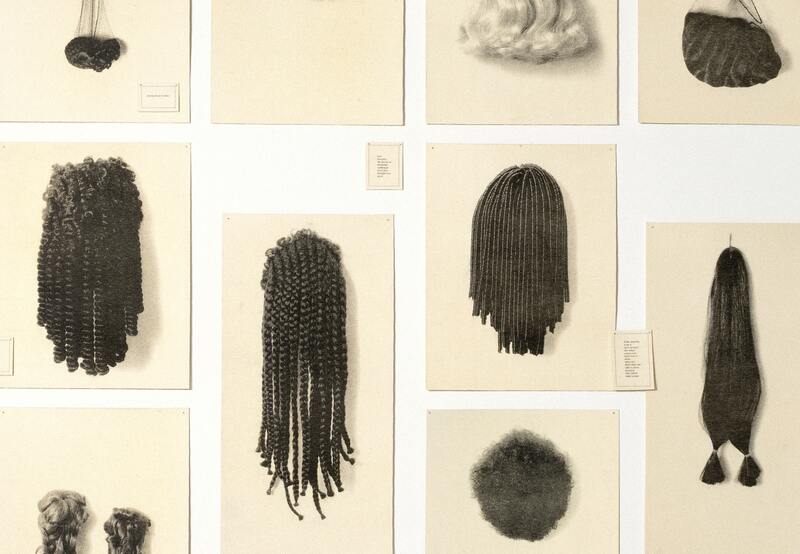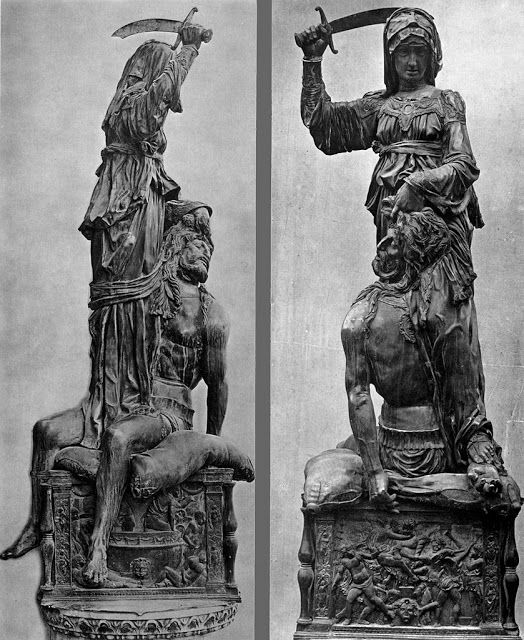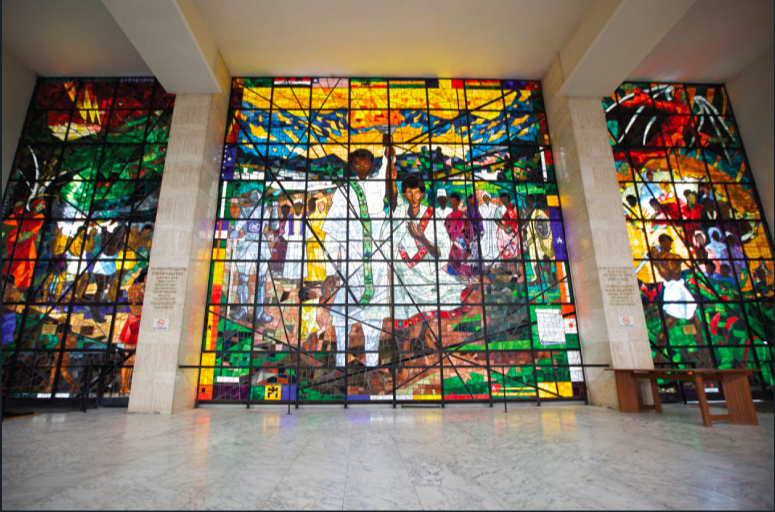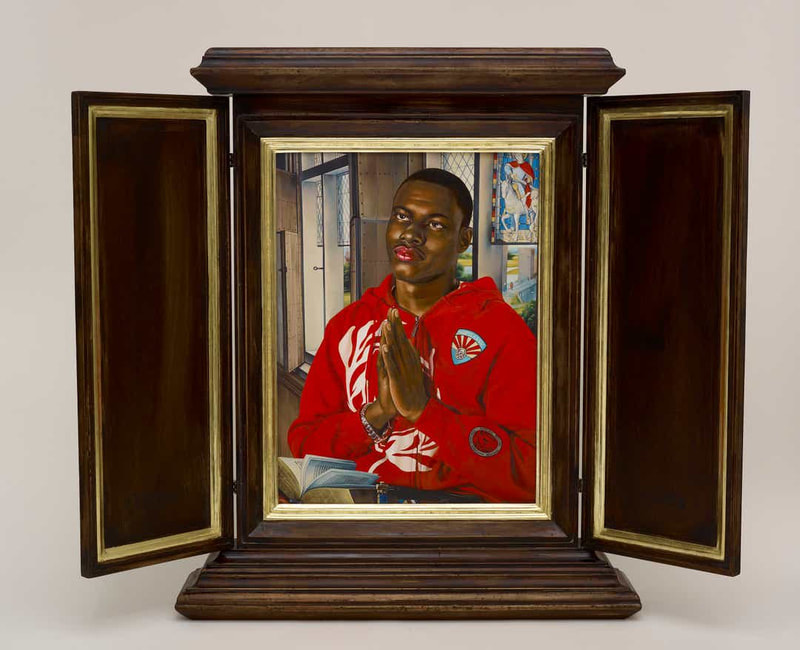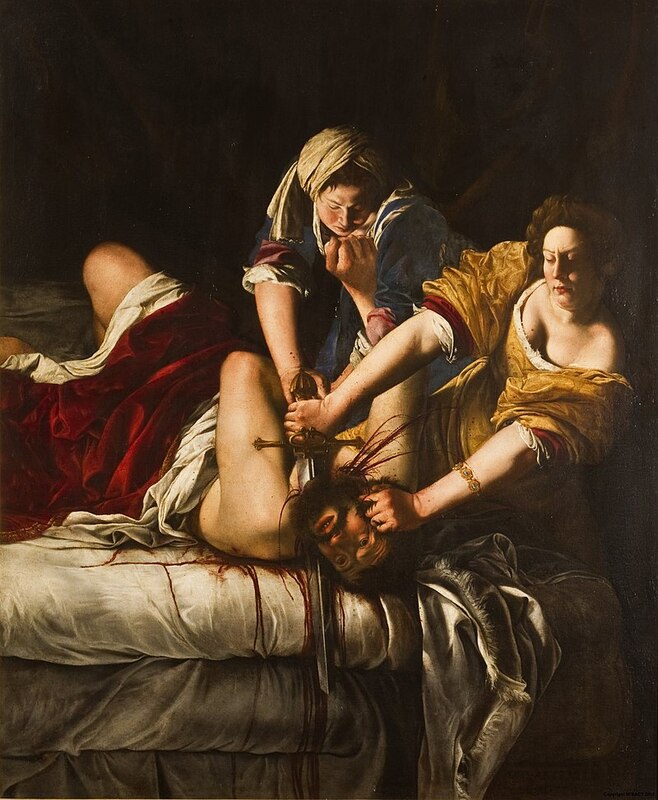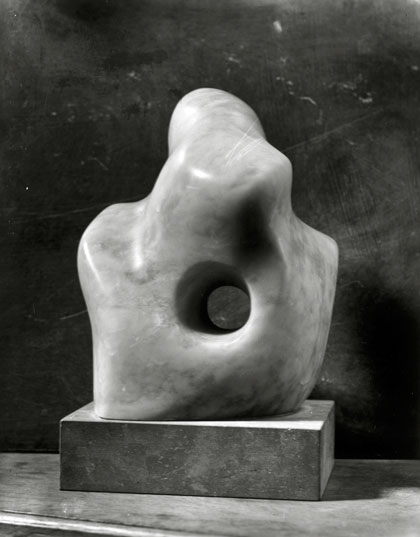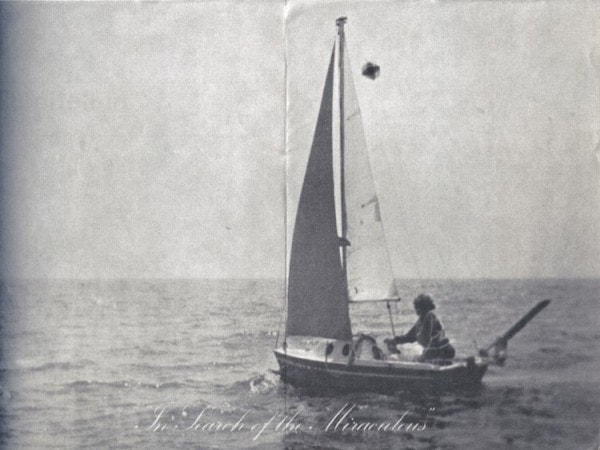|
Task 6 connects with Threshold Concept 6. It is an opportunity to consider how artists use their heads, hands and hearts to varying degrees throughout the creative process, and how art appeals not just to the eyeballs, but to the body and mind.
Alongside wider notes and research, you will complete:
|
TASK 6
|
ACTIVITY PART 1: PAYING ATTENTION, IN EVERY SENSE
This activity might initially seem open-ended. It's not always easy to pick a starting point on your own terms, but It's what artists often do. So, let's give it a go...
|
SO MANY IDEAS SPRING FROM AN INTERNAL RESPONSE TO FORM: FOR EXAMPLE, IF I SEE A WOMAN CARRYING A CHILD IN HER ARMS IT IS NOT SO MUCH WHAT I SEE THAT AFFECTS ME, BUT WHAT I FEEL WITHIN MY OWN BODY. THERE IS AN IMMEDIATE TRANSFERENCE OF SENSATION. BARBARA HEPWORTH |
ACTIVITY PART 2:
Once you have completed your initial practical investigations:
With regards to creating a Triptych, you might choose to work on 3 equally-sized and distanced panels or you might experiment with established expectations of a triptych. How might your 3 panels (sections, objects, units, recordings...) link or (dis)connect?
Once you have completed your initial practical investigations:
- Develop a Triptych (a 3 panelled/sectioned artwork) that responds to your starting point AND creatively considers 'head', 'hands' and 'heart'.
With regards to creating a Triptych, you might choose to work on 3 equally-sized and distanced panels or you might experiment with established expectations of a triptych. How might your 3 panels (sections, objects, units, recordings...) link or (dis)connect?
TASK 6 ADDITIONAL RESOURCES
What the eye sees is its own. What the heart can perceive is a very different matter. Gordon Parks
HEAD, HANDS, HEART; TRADITIONAL, MODERN, CONTEMPORARY
One of the delights of art teaching is preparing resources (such as this) and researching new artists. But we are all limited by our own knowledge (we only know what we know) and it is easy for art teachers to default to their own tastes, preferences and research habits. With this in mind, with a few constraints, I decided to outsource this section to other art educators by sharing the note below on social media:
Any attempt to organise artworks into categories (such as traditional, modern and contemporary) can be problematic; trying to distinguish between the intellectual, physical and emotional elements of an artwork - or the act of making an artwork using either head, hands or heart - is even more problematic (and potentially pointless). Regardless, the intention here is to provoke thinking on how artists might employ their minds and bodies to varying degrees, and how art does not solely impact upon our eyeballs but resonates through our minds and bodies in a myriad of ways. Below are artworks suggested by various others. Research the names/titles to find out more. Reflect on these choices with reference to the framework above. Perhaps worth noting too is how this grid format, when divided into singular columns or rows, presents its own versions of a triptych, each revealing new connections and possibilities.
A few notes, if only for myself, having completed this grid and read wider around the artists and works suggested (also see 'Further Reading', below).
- The first column (Traditional) uses 3 different responses to the same 2nd Century text that tells the story of Judith, a young widow from the Jewish city of Bethulia who beheads Holofernes, general of the Assyrian army that had besieged her city. It's a gruesome and visceral scene of (and by) heads and hands. Arguably, Artemisia Gentileschi's version (bottom left) is the most-heart-felt and tension-filled, potentially fuelled by her own experience of being raped at the age of 17.
- The Gordon Parks' image, above (top, centre), was a collaboration with writer Ralph Ellison in response to his novel 'Invisible Man', a stark account of America’s racial divisions, and of an unnamed black protagonist’s awakening to his condition of invisibility. The two men held in common a desire to address racial injustice and make visible the black experience in postwar America.
- Interestingly, 3 of the artworks above are also triptychs (or were intended to be, in the tragic case of Bas Jan Ader):
Afewerk Tekle's Total Liberation of Africa, 1958 (centre image) is a huge 3-panelled stained glass window in Africa Hall, Ethiopia. The central focus is a figure with a raised hand clenched into a fist. The first panel addresses the sorrow of the past; the central panel marks the present-day struggle; the third panel offers hope for the future.
Kehinde Wiley's work is intricately (hand) painted and reconsiders traditional works using contemporary subjects. This example uses a triptych frame typical of alter pieces from the Middle Ages. Of furtherinterest though was to discover his first video work (also a triptych), Ship of Fools, was partly inspired by Bas Jan Ader's (heart-led) and ultimately fatal 'Search for the Miraculous'. - Bas Jan Ader's (heart-led) and ultimately fatal 'Search for the Miraculous' triptych began with an exhibition of his work held at the Claire Copley gallery in LA in 1975. The second part of the Triptych was Ader’s attempt to sail across the Atlantic single-handed in what would have been the smallest sailboat ever to do so. He was never seen again. The third part of the triptych would have been a restaging (and possibly an expansion) of the Copley exhibition at his intended destination, the Groninger Museum, Netherlands.
TASK 6 SUMMARY
You should complete:
- a range of notes and wider research in response to the resources above.
- A series of initial experimental recordings in response to your chosen inspiration/starting point- this might include creative writing and sketches, audio and/or film recordings, photography or collage.
- A triptych - a 3-part/panelled/sectioned artwork - in response to the starting point of your choice with consideration of the role of head, hands and heart in art making - the intellectual, physical and emotional.
FURTHER READING
- The State of Art in Ethiopia Lecture by Afewerk Tekle, Ethio Beauty
- Lorna Simpson, Wigs (Portfolio) MoMA Learning
- In Search Of Bas Jan Alder... Hyperallergic article
- Kehinde Wiley: In Search of the Miraculous Exhibition press release
- Kehinde Wiley, Ship of Fools
- Gentileschi, Judith Slaying Holofernes, Kahn Academy resource
- Invisible Man Gordon Parks Foundation
